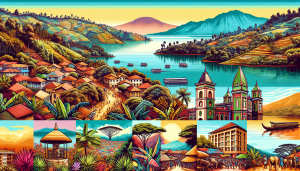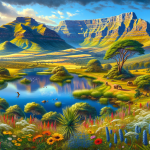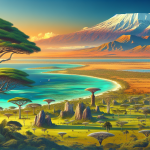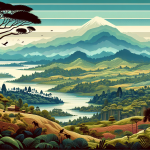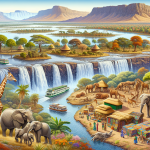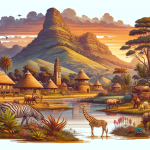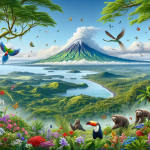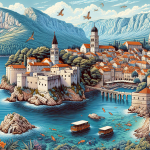Discovering Burundi: The Heart of Africa Unveiled
Burundi, a small yet captivating country nestled in the heart of Africa, often remains overshadowed by its more prominent neighbors. This hidden gem is rich in history, culture, and natural beauty, making it a must-visit destination for intrepid travelers seeking an off-the-beaten-path experience. From its stunning landscapes and diverse wildlife to its vibrant traditions and warm hospitality, Burundi offers a unique blend of attractions that promise to leave a lasting impression. This article delves into the myriad facets of Burundi, providing an in-depth exploration of what makes this country so special. Whether you’re an adventure seeker, a culture enthusiast, or simply someone looking to experience something new, Burundi has something for everyone. Let us embark on a journey to uncover the treasures of Burundi, a land that epitomizes the true essence of Africa.
A Glimpse into Burundi’s Geography and Climate
Burundi’s geography is remarkably diverse, featuring everything from lush highlands to pristine lakeshores. The country is dominated by the Great Rift Valley, which runs through its western region, creating a dramatic landscape of mountains and valleys. The eastern region, on the other hand, is characterized by rolling plains and savannas. The highest peak in Burundi is Mount Heha, standing at 2,685 meters (8,810 feet) above sea level, providing breathtaking views over the surrounding areas.
The Climate of Burundi
Burundi experiences a tropical highland climate, which is moderated by its elevation. The country has two main seasons: the rainy season, which spans from February to May and September to November, and the dry season, which runs from June to August and December to January. Temperatures are generally mild, averaging around 20°C (68°F) in the central plateau region. The combination of favorable weather and diverse landscapes makes Burundi an ideal destination for outdoor activities and exploration.
The Vibrant Culture and Traditions of Burundi
Burundi’s culture is a rich tapestry woven with threads of history, tradition, and modernity. The country is predominantly inhabited by three ethnic groups: the Hutu, the Tutsi, and the Twa. Each group has its distinct customs, but they also share many cultural practices that unite them as Burundians.
Traditional Music and Dance
Music and dance play a central role in Burundian culture. The Royal Drummers of Burundi are world-renowned for their powerful performances that have captivated audiences for centuries. These drummers use large, intricately carved drums called “ingoma” to create rhythmic beats that resonate with the soul. Traditional dances, such as the “intsinzi” and “umudiho”, are often performed during ceremonies and festivals, showcasing the country’s rich cultural heritage.
Burundian Cuisine
Burundian cuisine is a delightful fusion of flavors and ingredients that reflect the country’s agricultural bounty. Staple foods include beans, maize, sweet potatoes, and cassava. A popular dish is “ugali”, a type of maize porridge often served with vegetables and meat. Another beloved dish is “ndagala”, small dried fish that are typically fried and enjoyed as a snack or part of a main meal. The use of locally grown spices adds a unique twist to Burundian dishes, making them both flavorful and aromatic.
Exploring Burundi’s Natural Wonders
Burundi is home to an array of natural attractions that beckon nature lovers and adventure seekers alike. From national parks teeming with wildlife to serene lakes and majestic mountains, the country’s natural beauty is truly awe-inspiring.
National Parks and Wildlife
One of Burundi’s most notable national parks is Kibira National Park, located in the northwest of the country. This park is a haven for wildlife, including chimpanzees, colobus monkeys, and a variety of bird species. The dense forests of Kibira offer excellent opportunities for hiking and birdwatching.
Another must-visit destination is Ruvubu National Park, which spans across the northeastern part of Burundi. This park is home to a diverse range of animals, such as hippos, crocodiles, buffaloes, and antelope. Visitors can embark on guided safaris to witness these magnificent creatures in their natural habitat.
Lake Tanganyika
Lake Tanganyika, one of the world’s deepest and oldest freshwater lakes, borders Burundi to the west. The lake’s crystal-clear waters and stunning shores provide a perfect setting for various water activities, including swimming, snorkeling, and fishing. The town of Bujumbura, the capital of Burundi, is situated on the northeastern shore of Lake Tanganyika and serves as a gateway to exploring the lake’s beauty.
Historical and Cultural Attractions in Burundi
Burundi’s rich history is reflected in its numerous historical and cultural sites. These landmarks offer a glimpse into the country’s past and its journey towards the present.
Gishora Drum Sanctuary
The Gishora Drum Sanctuary is a significant cultural site located near the town of Gitega. This sanctuary is dedicated to preserving the tradition of Burundian drumming, which has been an integral part of the country’s heritage for centuries. Visitors can witness live drumming performances and learn about the history and significance of this art form.
Livingstone-Stanley Monument
The Livingstone-Stanley Monument is situated near the town of Mugere, commemorating the meeting between the famous explorers David Livingstone and Henry Morton Stanley in 1871. This historical site offers insight into the exploration era and the impact of European explorers on Africa.
Karera Waterfalls
The Karera Waterfalls are a series of cascading falls located in the southeastern part of Burundi. These waterfalls are not only a natural wonder but also hold cultural significance for the local communities. The lush surroundings and the soothing sound of the falls make it a perfect spot for relaxation and nature appreciation.
Practical Information for Visiting Burundi
Traveling to Burundi requires some preparation and awareness of practical information to ensure a smooth and enjoyable trip.
Visa and Entry Requirements
Most travelers to Burundi will need a visa to enter the country. It is advisable to apply for a visa in advance through the Burundian embassy or consulate in your home country. Ensure that your passport is valid for at least six months beyond your intended stay.
Health and Safety
Before traveling to Burundi, it is important to check the latest health and safety advisories. Vaccinations for yellow fever, hepatitis A, typhoid, and tetanus are recommended. Additionally, taking precautions against malaria by using insect repellent and sleeping under mosquito nets is advisable.
Currency and Language
The official currency of Burundi is the Burundian franc (BIF). It is recommended to carry cash, as credit card facilities may not be widely available outside major cities. The official languages are Kirundi, French, and English, with Kirundi being the most widely spoken.
Transportation
Getting around Burundi can be an adventure in itself. The country has a network of buses, taxis, and motorcycle taxis (known as “boda-bodas”) that facilitate travel between cities and towns. For a more comfortable and convenient option, consider hiring a private car with a driver.
Conclusion: Embrace the Beauty and Charm of Burundi
Burundi, with its rich cultural heritage, stunning landscapes, and warm hospitality, is a destination that offers a truly authentic African experience. Whether you’re exploring the vibrant city of Bujumbura, trekking through lush national parks, or immersing yourself in the local traditions, Burundi promises an unforgettable journey filled with unique and enriching experiences. As you plan your trip to this remarkable country, keep in mind the practical information and tips provided to ensure a safe and enjoyable adventure. Embrace the beauty and charm of Burundi, and let this hidden gem captivate your heart and soul.
For more information on traveling to Burundi, visit Lonely Planet’s Guide to Burundi.
